Cover
Copyright
Preface
Contents
Abbreviations
1: Candidate Technologies and Evaluation Challenges for 5G
1.1 5G Requirements Analysis
1.1.1 5G Application Types
1.1.2 5G Application Scenarios and Requirements Indicators
1.2 5G Research and Development Process
1.3 5G Candidate Technologies
1.3.1 Ultra-Dense Wireless Network
1.3.2 Large Scale Antenna Technology
1.3.3 Millimeter Wave Communications Technology
1.3.4 Flexible Spectrum Usage
1.3.5 Waveform and Multiple Access
1.3.6 Device to Device
1.4 Challenges in 5G Testing and Evaluation
1.4.1 Challenges Posed by New Technologies to Testing and Evaluation
1.4.2 Four Elements of Testing and Evaluation Requirements
Realness
Comprehensiveness
Rapidity
Flexibility
1.5 Summary
References
2: Evolution of Testing Technology
2.1 The Importance of Testing Technology
2.2 Testing Technology Evolution
2.2.1 Development of Testing Instruments
Instrument 1.0 Era
Instrument 2.0 Era
Bus Technology
Software Defined Radio Technology
Modular Instrument Technology
Hybrid Test System
Instrument 3.0 Era
2.2.2 Development Trend of Testing Technology
Coexistence of New and Traditional Test Equipment
The Leading Trend of Many-Core/Parallel Technology and FPGA Real Time Technology
Many-Core Parallel Technology
Real-Time FPGA Technology
Test Ecosystem Becomes the Trend
FPGA Based IP to the PIN Technology
Heterogeneous Computing Architecture Supporting Parallel Testing and Massive Signal Processing
2.3 Challenges of Testing Technology
2.3.1 Challenges of Multi-Function and High-Performance
2.3.2 Challenges of Multi-channel
2.3.3 Challenges of High Throughput
2.4 Summary
References
3: Channel Measurement and Modeling
3.1 Requirements for 5G Wireless Channel Model
3.2 Channel Modeling Method
3.2.1 Measurement-Based GSCM
3.2.2 Regular-shape GSCM
3.2.3 CSCM
3.2.4 Extended SV Model
3.2.5 Ray Tracing based Model
3.2.6 Comparison of Modeling Methods
3.3 Channel Measurement
3.3.1 Channel Measurement Methods
3.3.2 Channel Measurement Activities
3.3.2.1 Massive MIMO measurement
3.3.2.2 Measurement of D2D, V2V and HSR
3.3.2.3 Measurement of Millimeter Wave Band
3.4 Channel Data Processing
3.4.1 Path Parameters Extraction
3.4.1.1 EM Algorithm
3.4.1.2 SAGE Algorithm
CRLB Performance Bounds
Separability of Multipath Signals
3.4.1.3 FD-SAGE Algorithm
3.4.1.4 DMC and Its Estimation
3.4.1.5 Mobile Channel Estimation and Tracking
3.4.1.6 Automatic Clustering Algorithm
3.4.2 Channel Statistical Analysis
3.4.2.1 Basic Distribution Fitting Methods
3.4.2.2 Basic Correlation Analysis Method
3.4.2.3 Delay Domain Analysis
Angular Domain Analysis
3.4.2.4 Cluster Analysis
3.5 Existing Channel Models
3.5.1 3GPP SCM/3D/D2D/HF
3.5.2 WINNER I/II/+
3.5.3 ITU IMT-Advanced, IMT-2020
3.5.4 COST 259/273/2100/IC1004
3.5.5 IEEE 802.11 TGn/TGac
3.5.6 QuaDRiGa, mmMAGIC
3.5.7 IEEE 802.15.3c/ IEEE 802.11ad/aj/ay
3.5.8 MiWEBA
3.5.9 METIS
3.5.10 5GCM
3.5.11 Comparison of Existing Models
3.6 Stochastic Channel Generation
3.6.1 Definition of Simulation Scenarios
3.6.2 Generation of Large Scale Parameters
3.6.2.1 Path Loss
3.6.2.2 Other Large Scale Parameters
3.6.3 Generation of Small Scale Parameters
3.6.4 Generation of Channel Coefficient
3.6.4.1 Channel Simulation Examples
3.7 Chapter Summary
References
4: Software Simulation
4.1 Overview on Software Simulation
4.2 5G Software Simulation Requirements
4.2.1 Simulation Requirements Analysis
4.2.2 Technological Impact Analysis
4.3 5G Software Link Level Simulation
4.3.1 Link Technology Overview
4.3.2 Link Simulation Realization
4.3.2.0 Simulation Key Factors
4.3.2.0 Simulation Process Overview
4.3.3 Introduction to Simulation Cases
4.3.3.0 Case 1: Massive MIMO Performance Simulation
4.3.3.0 Case 2: Heterogeneous Network Energy Efficiency Simulation
4.3.3.0 Case 3: Tail-Biting Convolution Code Decoder Simulation
4.3.3.0 Case 4: Compressive Sensing Simulation
4.3.3.0 Case 5: User-Oriented Link Adaption in D2D Network Coding Multicast
4.4 5G Software System Level Simulation
4.4.1 Test Evaluation Methods
4.4.2 Key Simulation Technologies
4.4.2.0 Dynamic Simulation Modeling Technology
4.4.2.0 Virtual Computational Resources Management Technology
4.4.2.0 Multi-core Parallel Simulation Technology
4.4.2.0 Hardware Acceleration Simulation Technology
4.4.2.0 Real-time Transmission Technology
4.4.3 Introduction to Simulation Cases
4.4.3.0 Case 1: Massive MIMO System Level Simulation
4.4.3.0 Case 2: Radio Resource Optimization of Ultra Dense Network
4.4.3.0 Case 3: Statistical Modeling Simulation of the Uplink Interference [49]
System Model
Interference Statistic Model and Simulation Verification
4.4.3.0 Case 4: Local Mobile Cloud Assisted Computation Offloading
4.4.3.0 Case 5: Cross Operator Flexible Spectrum Management Simulation
4.5 Software Visualization of 5G Network Simulation
4.5.1 Architecture Summary
4.5.2 Interface Demonstration
4.5.2.0 Demonstration of the Simulation Results of 3D MIMO Scenario
4.5.2.0 Demonstration of the Simulation Results of UDN Scenario
References
5: Evaluation Test of Software and Hardware Co-simulation
5.1 Overview of Software and Hardware Co-Simulation Evaluation and Test
5.1.1 Requirements of 5G Software and Hardware Simulation Evaluation and Test
5.1.2 Forms and Applications of Software and Hardware Co-Simulation Testing and Evaluation
Forms of Software and Hardware-in-the-Loop Simulation Testing and Evaluation
Superiority of HIL
5.2 Evaluation and Test of Software and Hardware Link-Level Co-Simulation
5.2.1 HIL-Based Link Simulation Composition
5.2.2 Realization of Link Simulation Testing and Evaluation
Key Factors of Software and Hardware Simulation Testing and Evaluation
Main bottleneck for system implementation
Closed loop method based on HIL link simulation
5.2.3 Case Introduction of Software and Hardware Simulation Evaluation Test
Case I: Test of Spectral Domain Channel Multiplexing Technology Based on Cyclic Delay Modulation
Case 2: Verficationof Frequency Offset Correction Algorithm in Centralized SC-FDMA
Case 3: Laboratory Integrated Verification Platform Supporting Remote Use
5.3 Evaluation and Test on Hardware and Software System-level Co-simulation
5.3.1 Composition of Hardware and Software System-level Co-simulation (Fig. 5.35)
5.3.2 Key Technologies of Hardware and Software System-Level Co-simulation
Hardware acceleration based on USRP-RIO
Distributed data sharing technology
PXI multi-computing specification
5.3.3 Case Study of Simulation
Case1: System Simulation PlatformwithPhysical Layer Acceleration Based on USRP-RIO (Fig. 5.41)
5.4 Summary
References
6: 5G Hardware Test Evaluation Platform
6.1 Overview of Typical Hardware Platform Used for 5G Evaluation
6.2 Test Platform of MIMO Parallel Channel
6.2.1 5G Channel Test Requirements
6.2.2 Status and Shortcomings
6.2.3 Key Technical Challenges
6.2.4 Architecture of MIMO Parallel Channel Sounder
6.2.5 Test Results
6.2.6 Channel Measurement and Test
6.2.6.0 Scenario Test Planning and Measurement
6.2.6.0 Channel Model Library
6.3 OTA Test Platform
6.3.1 5G Requirements for OTA Test
6.3.2 Status and Shortcomings of OTA Test Scheme
6.3.2.0 OTA Test Scheme Based on Anechoic Chambers
6.3.2.0 OTA Test Scheme Based on Reverberation Chamber
6.3.2.0 Two-Stage OTA Test Scheme Based on Anechoic Chamber
6.3.3 Key Technical Difficulties and Challenges
6.3.4 OTA Platform Example
6.3.4.0 OTA Platform Architecture
6.3.4.0 Channel Analog/Playback Device
6.4 5G Open Source Community
6.4.1 Introduction to Requirements
6.4.2 Development Status of Communications Platform Based on General Purpose Processor
6.4.3 Introduction to Open 5G Universal Platform
6.4.4 Key Technologies of Universal Platform Based on General Purpose Processor
6.4.4.0 Real-Time Processing of Baseband Signal
Software Acceleration Method
Actual Test of Physical Layer of OAI Open Source Platform
6.4.4.0 Resource and Network Function Virtualization
6.4.4.0 Dynamic Task Allocation and Resource Matching Scheduling
Task Segmentation and Parallelization Mode
Scheduling Strategy and Real-Time
Hardware Resource Scheduling Allocation Method
6.5 Summary
References
7: Field Trial Network
7.1 Requirements and Technical Challenges
7.1.1 Various Application Scenarios
7.1.2 Technical Challenges in Field Trial
7.1.3 Development Status of 5G Test Bed in Foreign Countries
7.1.4 Development and Evolution of HetNet Convergence
7.2 5G Test Field Design
7.2.1 Network Architecture of HetNets Convergence
7.2.2 Abundant 5G Typical Scenarios
7.2.3 3GPP Wireless Network Design
3GPP Core Network Design
Core Network Design Process
Network Element Planning and Design
Bandwidth Requirements Bearing
3GPP Wireless Access Network Design
Wireless Network Design Process
Propagation Model Selection
Coverage Design
Capacity Design
Site Resources Design
Indoor Wireless Network Design
7.2.4 WLAN Wireless Network Design
Analysis on New Generation WLAN Technology
The Latest Development of WLAN Technology
IEEE802.11 ac
IEEE802.11ad
WLAN System Architecture
WLAN Coverage Design
WLAN Indoor Propagation Model
WLAN Indoor Coverage Planning Scheme
WLAN Capacity Design
Network Capacity Calculation
Discussion on Optimal Network Capacity Based on Computational Results
The Guiding Significance of Network Capacity in Actual Network Planning
7.2.5 Large-Scale Test User Application Scenarios
7.3 Typical Case Analysis of Field Trials
7.3.1 Case One: Research on the Irregularity of Wireless Cellular Networks
Test Purpose
Test Environment
Test Results
7.3.2 Case Two: Characteristics Analysis on the Radio Wave Propagation Between Multiple Frequency Bands
Test Purpose
Test Environment
Test Results
7.3.3 Case Three: CoMP Key Technologies Test
Test purpose
Test Environment
Test Results
7.3.4 Case Four: Active Antenna System (AAS) Key Technologies Test
Test Purpose
Test Environment
Test Results
7.3.5 Case Five: Inter-Cell Interference Coordination (ICIC) Key Technologies Test
Test purpose
Test Environment
Test Results
7.3.6 Case Six: Public WLAN Network Coverage Performance Test
Test Purpose
Test Environment
Test Results
7.4 Wireless Network Data Intelligence Analysis
7.4.1 Background and Necessity
Key Technologies
Technical Roadmap
Uniqueness
Requirements to Be Achieved
7.4.2 Status
7.4.3 Application Scenarios
Innovation Points
Application Model: Complex Network Visualization Technology
Application Mode: Building the Macro Optimization Intelligent System
Application Mode: Closed Loop Intelligent Management of Network Problems
Application Mode: Intelligent Single Station Batch Submission For Acceptance
7.5 Summary
References
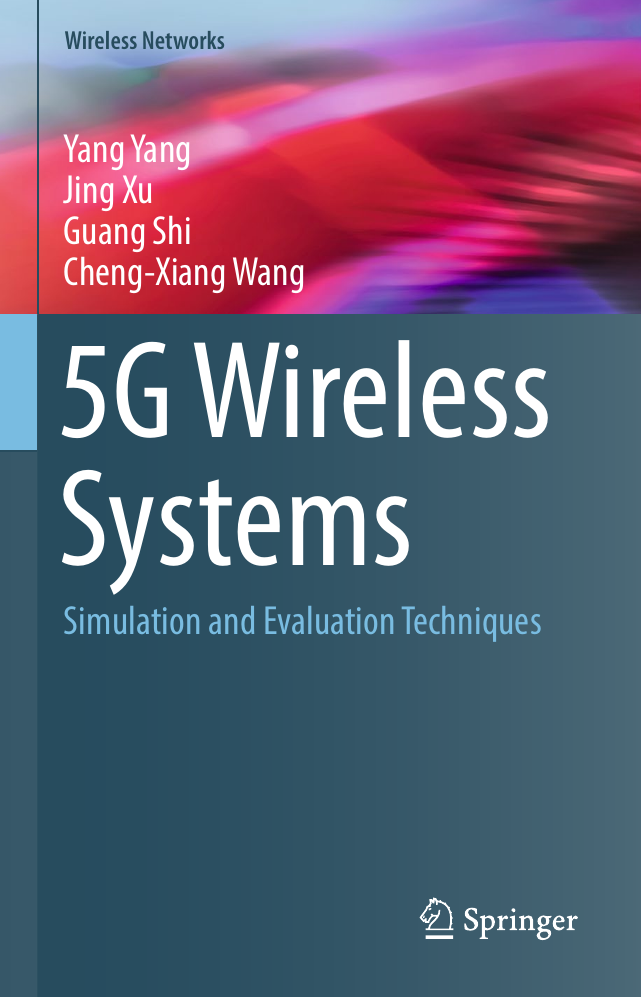


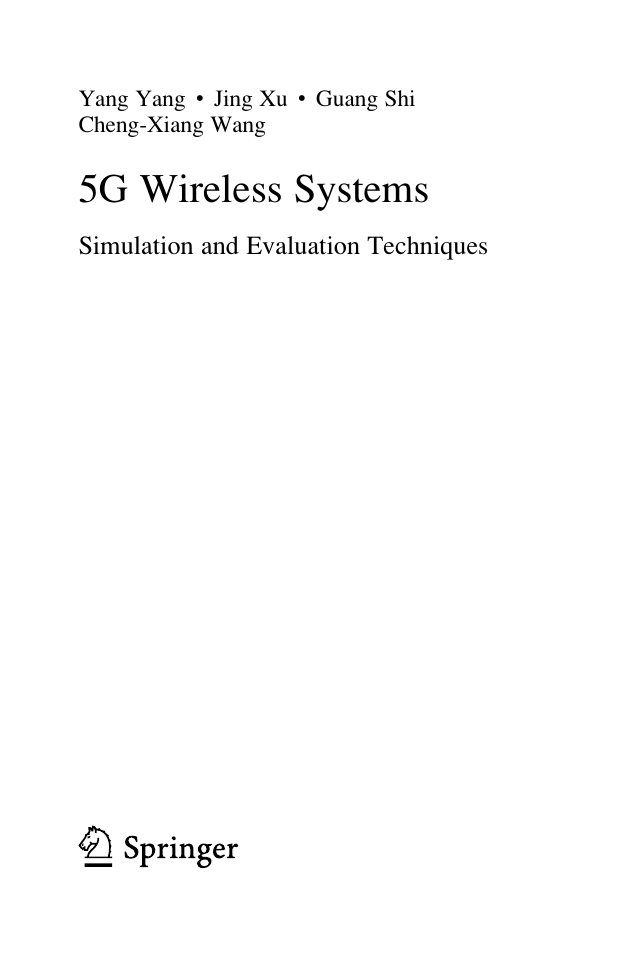
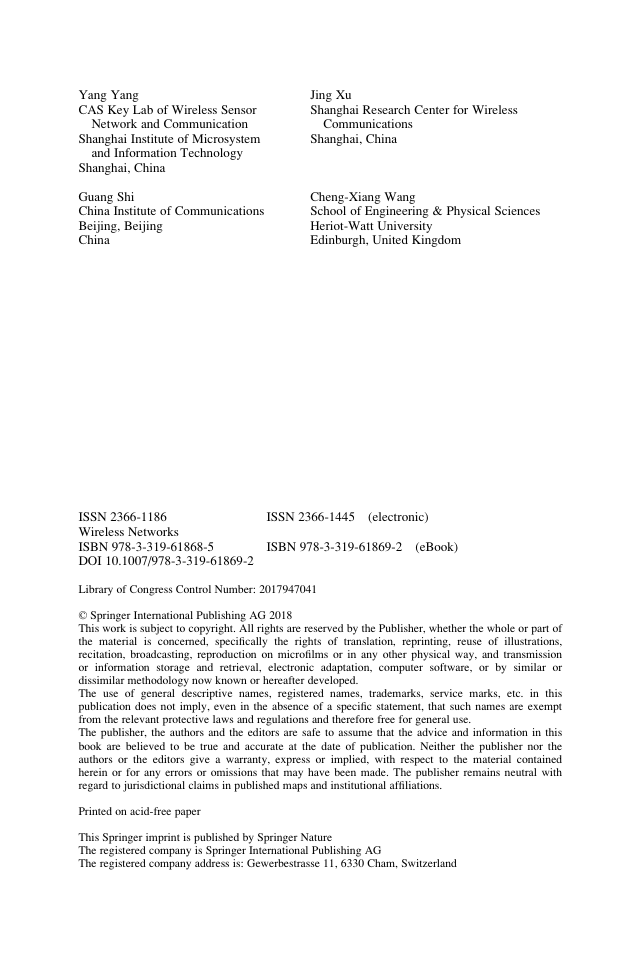
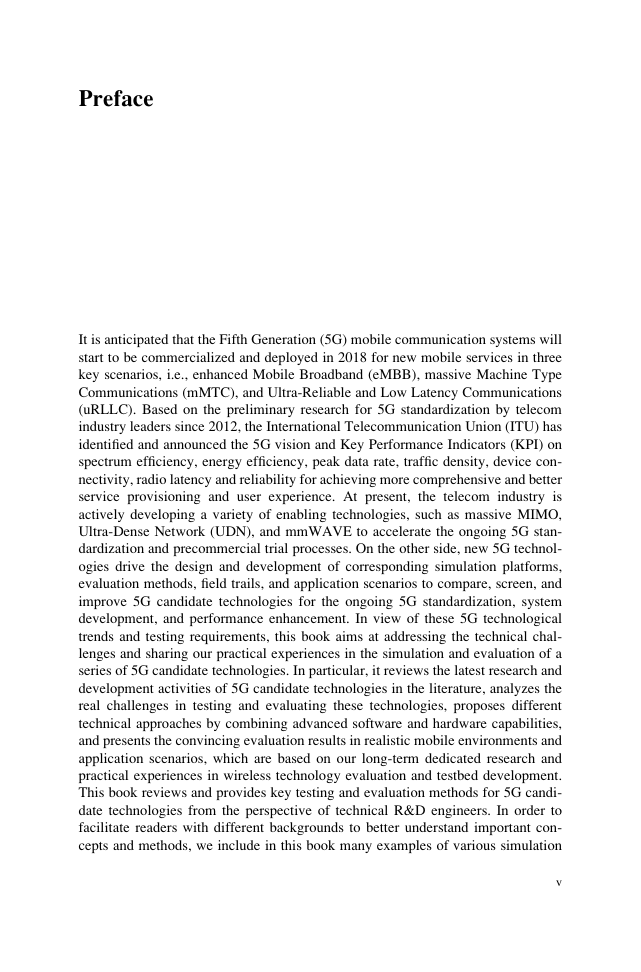
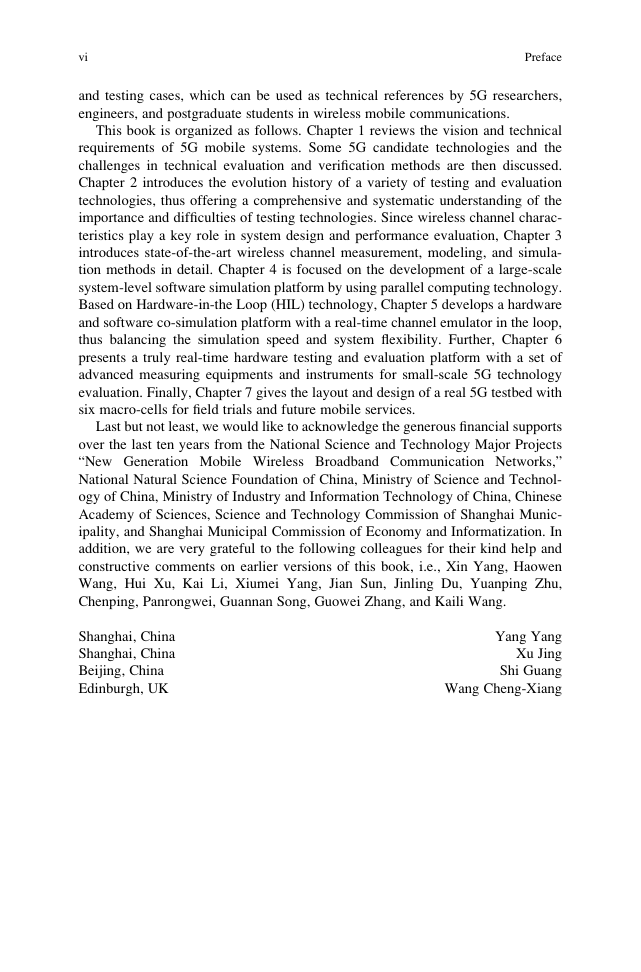
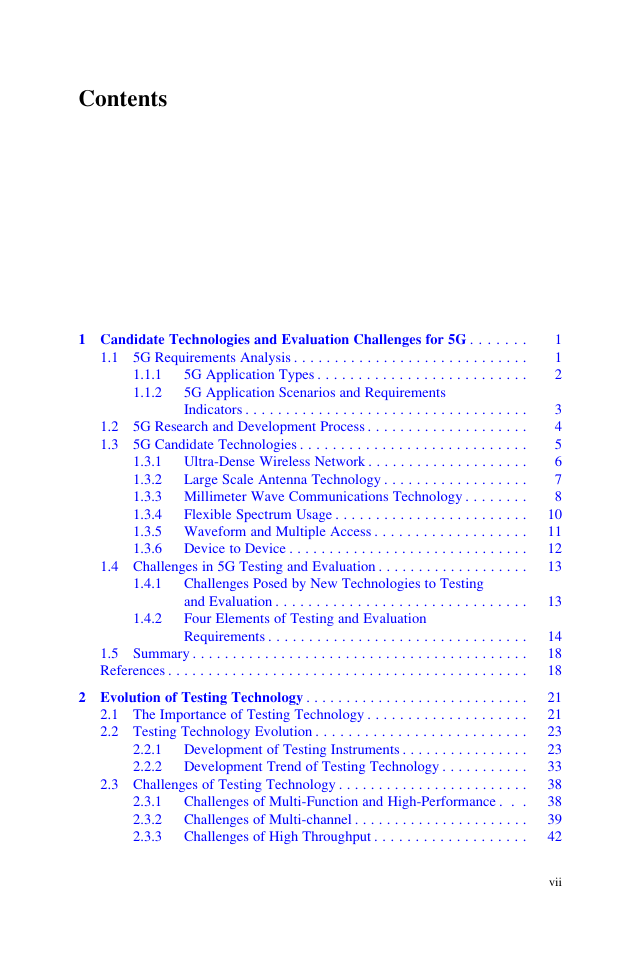








 2023年江西萍乡中考道德与法治真题及答案.doc
2023年江西萍乡中考道德与法治真题及答案.doc 2012年重庆南川中考生物真题及答案.doc
2012年重庆南川中考生物真题及答案.doc 2013年江西师范大学地理学综合及文艺理论基础考研真题.doc
2013年江西师范大学地理学综合及文艺理论基础考研真题.doc 2020年四川甘孜小升初语文真题及答案I卷.doc
2020年四川甘孜小升初语文真题及答案I卷.doc 2020年注册岩土工程师专业基础考试真题及答案.doc
2020年注册岩土工程师专业基础考试真题及答案.doc 2023-2024学年福建省厦门市九年级上学期数学月考试题及答案.doc
2023-2024学年福建省厦门市九年级上学期数学月考试题及答案.doc 2021-2022学年辽宁省沈阳市大东区九年级上学期语文期末试题及答案.doc
2021-2022学年辽宁省沈阳市大东区九年级上学期语文期末试题及答案.doc 2022-2023学年北京东城区初三第一学期物理期末试卷及答案.doc
2022-2023学年北京东城区初三第一学期物理期末试卷及答案.doc 2018上半年江西教师资格初中地理学科知识与教学能力真题及答案.doc
2018上半年江西教师资格初中地理学科知识与教学能力真题及答案.doc 2012年河北国家公务员申论考试真题及答案-省级.doc
2012年河北国家公务员申论考试真题及答案-省级.doc 2020-2021学年江苏省扬州市江都区邵樊片九年级上学期数学第一次质量检测试题及答案.doc
2020-2021学年江苏省扬州市江都区邵樊片九年级上学期数学第一次质量检测试题及答案.doc 2022下半年黑龙江教师资格证中学综合素质真题及答案.doc
2022下半年黑龙江教师资格证中学综合素质真题及答案.doc